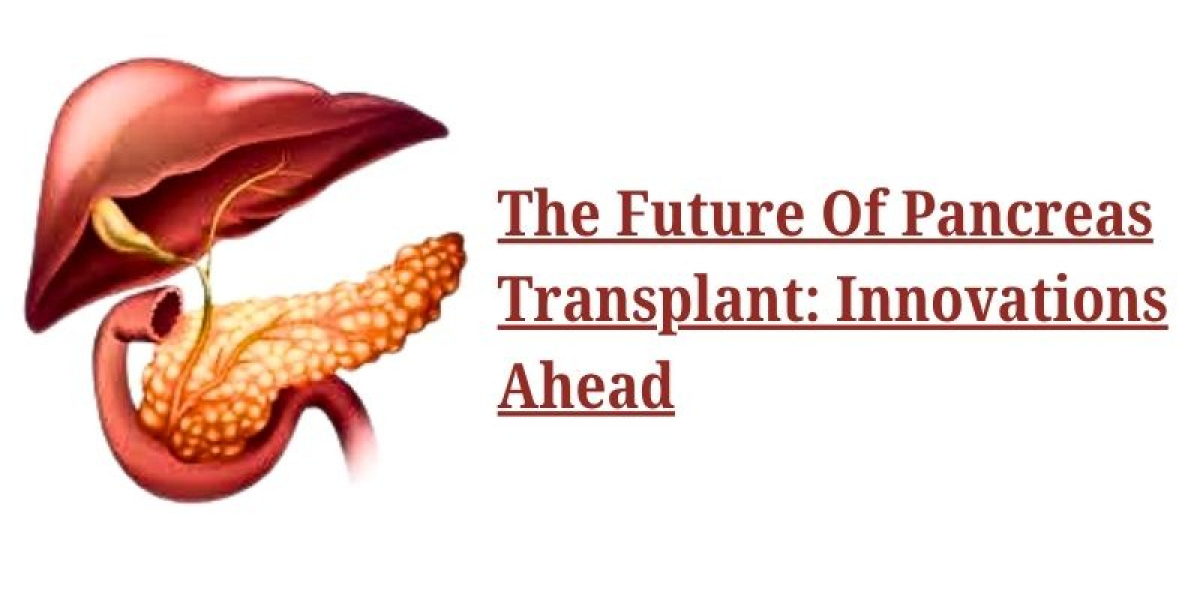As medical technology continues to evolve, the landscape of organ transplantation is undergoing a transformative shift. Among these vital procedures, the pancreas transplant stands out as a powerful treatment for patients with severe diabetes. Coupled with innovations in immunosuppressive therapies, regenerative medicine, and organ preservation, the future of pancreas transplantation holds tremendous promise. This is especially true for patients undergoing a kidney pancreas transplant, which has become a cornerstone in managing end-stage renal disease complicated by type 1 diabetes.
Understanding Pancreas Transplants
A transplant of the pancreas is the exchange of a patient's non-working pancreas with that of a donor pancreas. The objective is to have normal insulin production, no longer requiring insulin injections and minimizing complications of diabetes. Although this surgery is not usually the initial treatment for diabetes, it is a life-altering option for those with extensive complications or already in the need for a transplant of a kidney.
When paired with a kidney transplant, also known as a kidney-pancreas transplant, the advantages are significant. The dual-organ surgery not only restores insulin but also corrects renal failure with one surgery, greatly enhancing survival and quality of life.
Innovations on the Horizon
As promising as current outcomes are, researchers and clinicians are pushing boundaries to improve success rates, reduce complications, and expand the pool of eligible recipients. Here are some of the most exciting innovations shaping the future of pancreas transplant procedures:
1. Artificial Pancreas and Bioengineered Organs
One of the most talked-about developments in transplant science is the rise of bioengineered organs. Scientists are exploring ways to grow pancreatic tissue in labs using stem cells or even 3D bioprinting technology. These techniques aim to produce functional, patient-specific pancreatic cells, potentially eliminating the need for traditional organ donors.
Artificial pancreas systems, while not actual transplants, are also improving rapidly. These devices use continuous glucose monitors and insulin pumps to mimic the pancreas’s natural function, offering a bridge or alternative to transplantation in some cases.
2. Advances in Immunosuppressive Therapy
One of the biggest challenges of any organ transplant is the possibility of rejection. Immunosuppressive medications are required to keep the body from rejecting the new organ, but they have a multitude of side effects, such as heightened risk of infection and toxicity.
New-generation therapies are becoming better targeted and less toxic. Some are developing ways of inducing immune tolerance—teaching the recipient's immune system to tolerate the new organ without taking lifelong medication. This has the potential to revolutionize both pancreas and kidney transplant results.
3. Islet Cell Transplantation
Rather than transplanting the whole pancreas, surgeons may also harvest and implant islet cells—groups of insulin-secreting cells from a donor pancreas. Although not yet a mainstream choice, ongoing trials and advancements in islet cell isolation and encapsulation procedures could render this a practical alternative.
Encapsulation technologies are also promising. By immuring islet cells in a protective coating, scientists hope to protect them from immune attack, eliminating the requirement for immunosuppression.
4. Xenotransplantation
Another area gaining traction is xenotransplantation—the use of organs from genetically modified animals, such as pigs. Although ethical and immunological hurdles remain, this could vastly increase the availability of organs for both pancreas and kidney transplant candidates.
Recent breakthroughs in gene-editing technologies like CRISPR have made it possible to modify animal organs to be more compatible with the human immune system. If successful, this could help meet the growing demand for organs.
5. Organ Preservation and Transport Technology
Legacy organ transport involves the use of cold storage, thereby restricting how long an organ stays viable. Cutting-edge innovations such as normothermic machine perfusion (NMP) condition the organ under warm temperatures while providing oxygen-rich blood to prevent loss of function and fewer complications after the transplant.
This technology is particularly applicable to kidney pancreas transplantation, where the viability of organs is crucial to successful outcomes.
The Role of AI and Data Analytics
Artificial intelligence (AI) and machine learning are making their way into transplantation medicine as well. From predicting transplant success to optimizing donor-recipient matching, these technologies offer ways to personalize and improve treatment plans. AI can also assist in monitoring post-transplant health, detecting early signs of rejection or complications and prompting timely intervention.
Expanding Access and Reducing Disparities
While technological advances are vital, equitable access to pancreas transplant procedures must also be prioritized. Socioeconomic and racial disparities continue to limit transplant access for many patients. Future innovations should be paired with policies that promote inclusion, donor education, and public awareness.
Telemedicine and decentralized care models are also helping bridge gaps, particularly for patients in rural or underserved areas who might benefit from a kidney pancreas transplant but lack access to specialized centers.
Conclusion
The future of pancreas transplantation is not just bright—it's revolutionary. With the advent of regenerative medicine, bioengineering, and smart healthcare systems, we are on the verge of a new era where transplant outcomes are safer, more predictable, and accessible to a larger number of patients. The merging of these advances is of specific importance to kidney-pancreas transplant recipients, who have the most to benefit from the intersection of medical and technological advancements.
As studies keep moving forward, what was once seen as futuristic is now quickly turning into reality. The coming decade can very well reshape the way we perceive organ transplantation, taking it from an intricate, ultimate option to a customized, optimized treatment for lifestyle disorders such as diabetes.
For More:- (Click Here)



